ARTICLE AD BOX
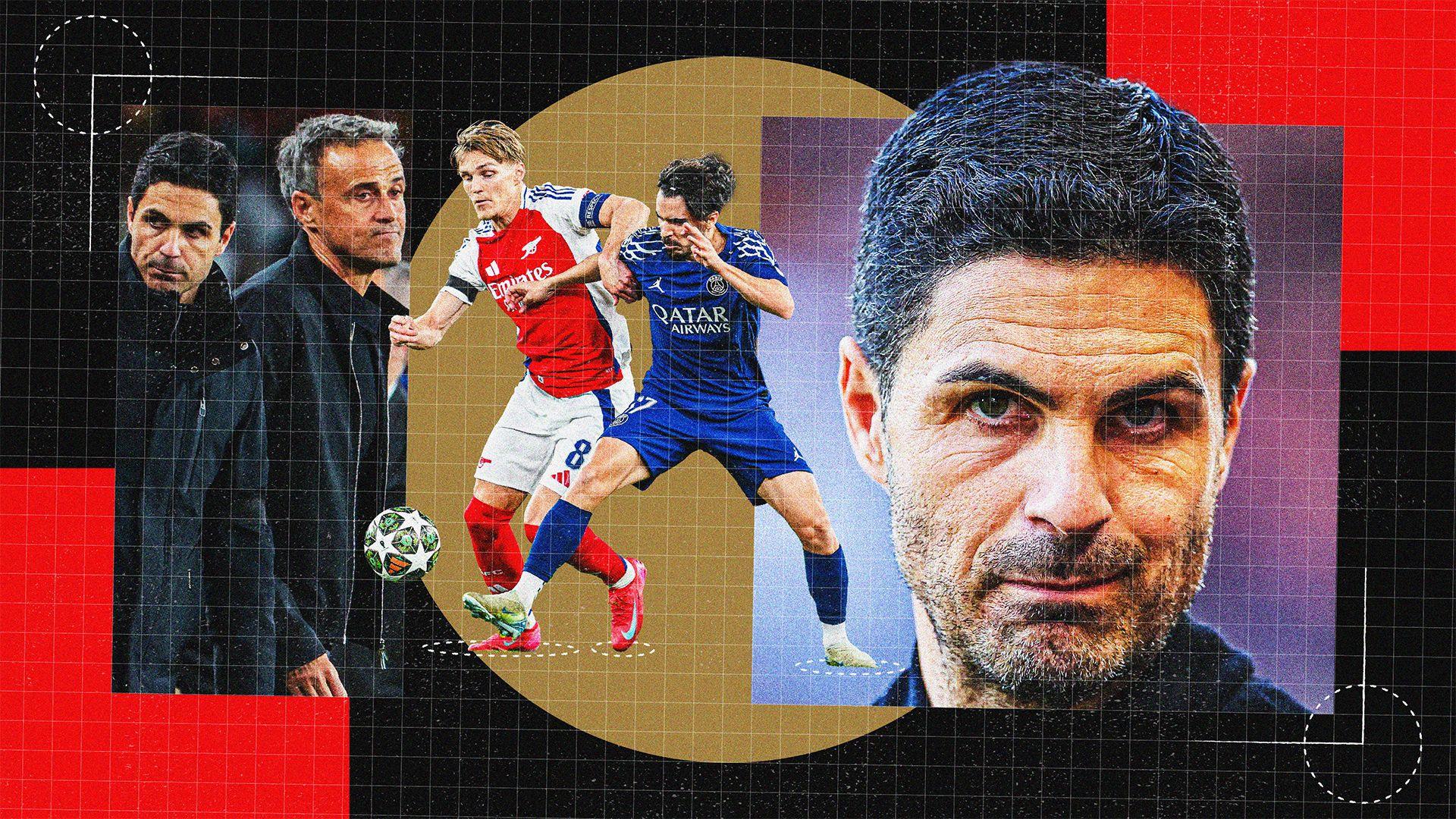
PSG have racked up 82 shots (29 on target) when hosting Manchester City, Liverpool and Aston Villa at the intimidating Parc des Princes this season.
Alex Keble
Football tactics writer
Mikel Arteta says Arsenal will use "rage, anger, frustration" and "a bad feeling in the tummy" to try and overturn the 1-0 Champions League semi-final first-leg deficit against Paris St-Germain.
For supporters travelling to Paris on Wednesday, the scene of Arsenal's 2006 Champions League final defeat, the stomach churns.
Arsenal have not scored in any of their past seven semi-final matches in all competitions (losing five and drawing two).
But PSG have their own Champions League ghosts, their own archive of meltdowns. The tie still hangs in the balance.
Thomas Partey's return to Arsenal's midfield could be decisive, as could Ousmane Dembele's fitness after only training since Monday.
Then there is the tactical battle, won by Luis Enrique in the first leg but, thanks to Mikel Arteta's mid-game tweaks, perhaps set up to swing in Arsenal's favour.
Get past the nerves and the historic trauma, and Arsenal supporters have reason to feel optimistic. Four reasons, to be exact.
1. Keep the 4-2-3-1 press Arteta switched to mid-game
For any pessimistic fans, some good news: the first thing Arsenal have to do can be filed under "more of the same". The last 70, that is, not the first 20.
PSG overwhelmed Arsenal in the first 20 minutes at the Emirates, cutting through midfield like a knife through butter. They held 77% possession in that spell as wave after wave of attack pushed the hosts back.
Enrique's initial setup flummoxed Arsenal's 4-4-2. Fabian Ruiz and Joao Neves sat high, pinning Declan Rice and Mikel Merino, which left Ousmane Dembele free to drop off the front line and become the spare man in the middle.
Whenever Arsenal's two-man midfield looked to cover Dembele, there was always at least one of those two high eights free.
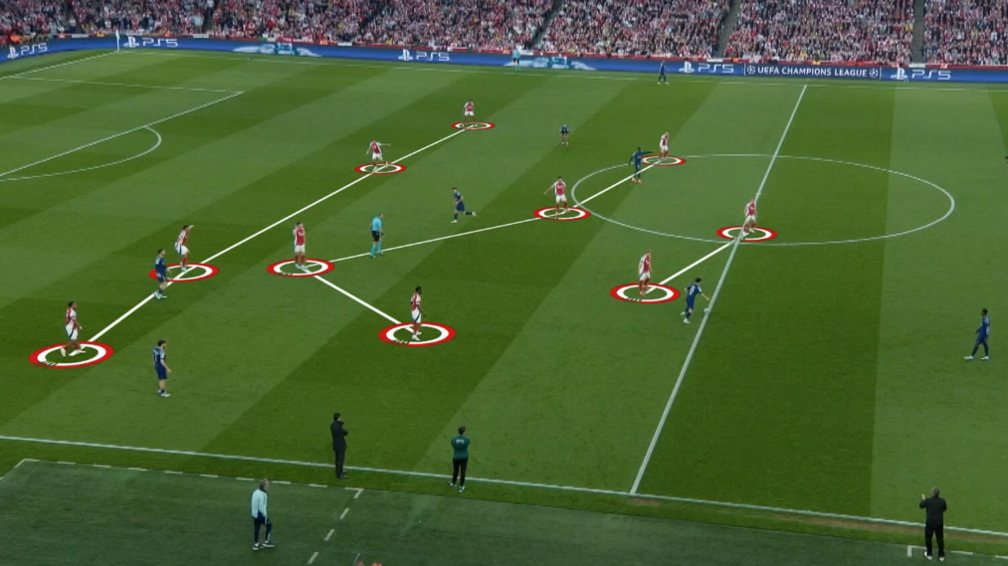
In this example, as shown on Match of the Day, both Ruiz and Neves are free between the lines as Arsenal set up initially in a 4-4-2 shape
On Match of the Day, pundit Stephen Warnock explained how Arsenal's Bukayo Saka was breaking out of the 4-4-2 shape "too early" which opened up the left-hand side for PSG.
So Arteta changed the shape to a 4-2-3-1, below, dropping Martin Odegaard out of the front line and into midfield to track Vitinha.
Arsenal now had an extra body in the middle to cope with those intelligent rotations between Vitinha, Neves, and Ruiz, which - coupled with the centre-backs moving more aggressively out to meet Dembele - stopped PSG from dominating.
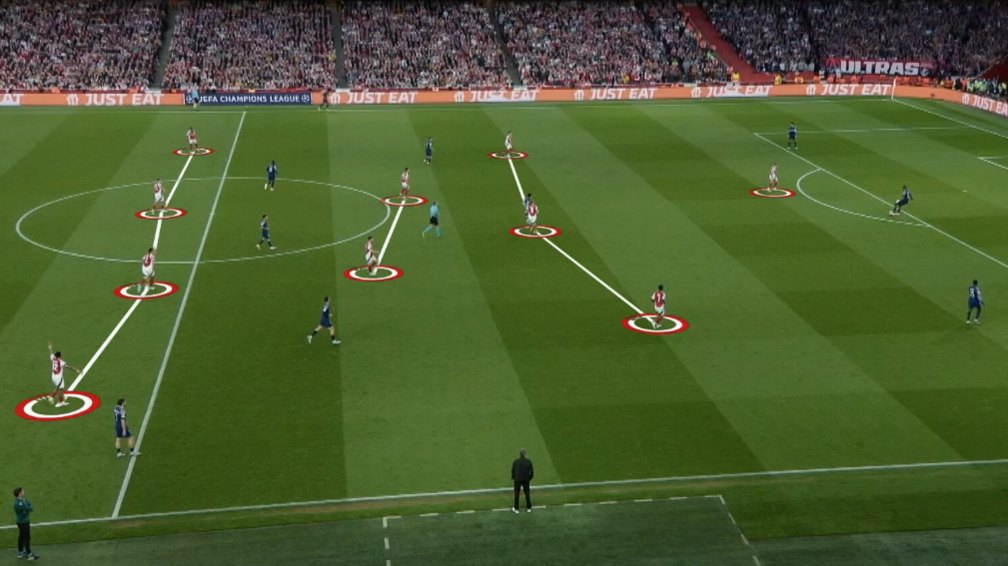
After the opening 20-minute period, Arteta tweaks Arsenal's set-up into a 4-2-3-1 formation. Odegaard sits on Vitinha and Arsenal's midfield five have just one player each to track, solidifying the centre
Arsenal grew in confidence and, winning tackles in midfield, started to gain territory and get attackers on the ball. From minutes 21 to 95, Arsenal held 55% possession and out-shot PSG 10-7.
Partey's return should help them do that again, only better. He probably would have sniffed out the danger to prevent Dembele's winner last week, and ought to track the PSG midfielders more intelligently than Merino was able to.
But all eyes should be on the key battle of the game: Odegaard's man-marking job on Vitinho, the metronome and orchestrator of Enrique's fluid possession football.
Across the 'Big Five' leagues in Europe, Vitinha ranks second only to Bayern's Joshua Kimmich for both touches per 90 (117) and passes completed per 90 (98).
Stop Vitinha and you probably stop PSG.
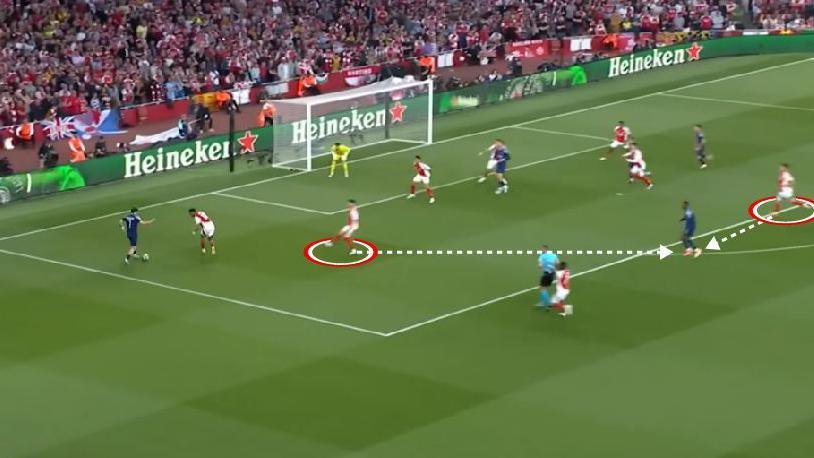
Either Rice or Merino should have moved across to cover Dembele before his fourth-minute goal
2. Get Odegaard deeper to dictate play with Saka
In a 4-2-3-1 shape Arsenal should be PSG's equals, immediately solving a lot of problems and creating a more even game territorially. From here, Arteta can move his focus to getting more out of Odegaard when the Gunners have possession,
The Norwegian has been criticised by some fans for his lack of big-game impact.
"We had especially one issue that we corrected after 15-20 minutes," Arteta said after the first leg. "We sustained that for the rest of the game, which I think turned the game around."
Pressed further on what he meant, Arteta told reporters it was "an issue we had with the ball" adding: "In a very specific moment, you don't have the chance to present and they decide to bring all the midfielders back, you're going to struggle."
Arteta was probably referring to Odegaard's failure to "present" when Arsenal were in possession; he touched the ball just three times in the first 20 minutes.
Below, in the 11th minute, Odegaard is nowhere to be seen, forcing William Saliba and David Raya to exchange passes twice before PSG win the ball:
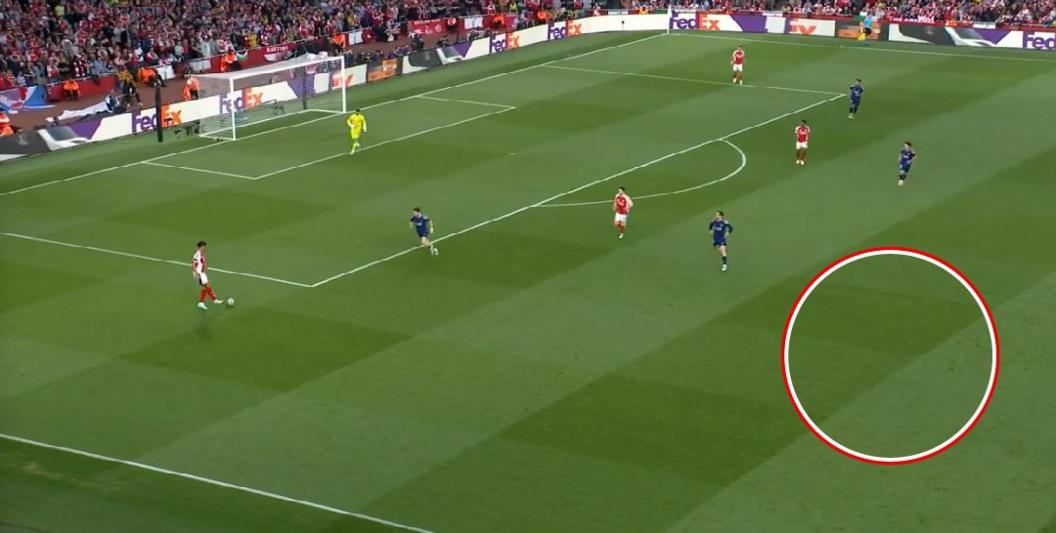
Odegaard, roaming too high and out of shot, leaves Saliba (on the ball) without a forward pass
Odegaard showed more as the game went on and helped Arsenal build through the thirds, although he still had a limited impact by his high standards.
Only 10 of his 30 passes went forward by more than a yard.
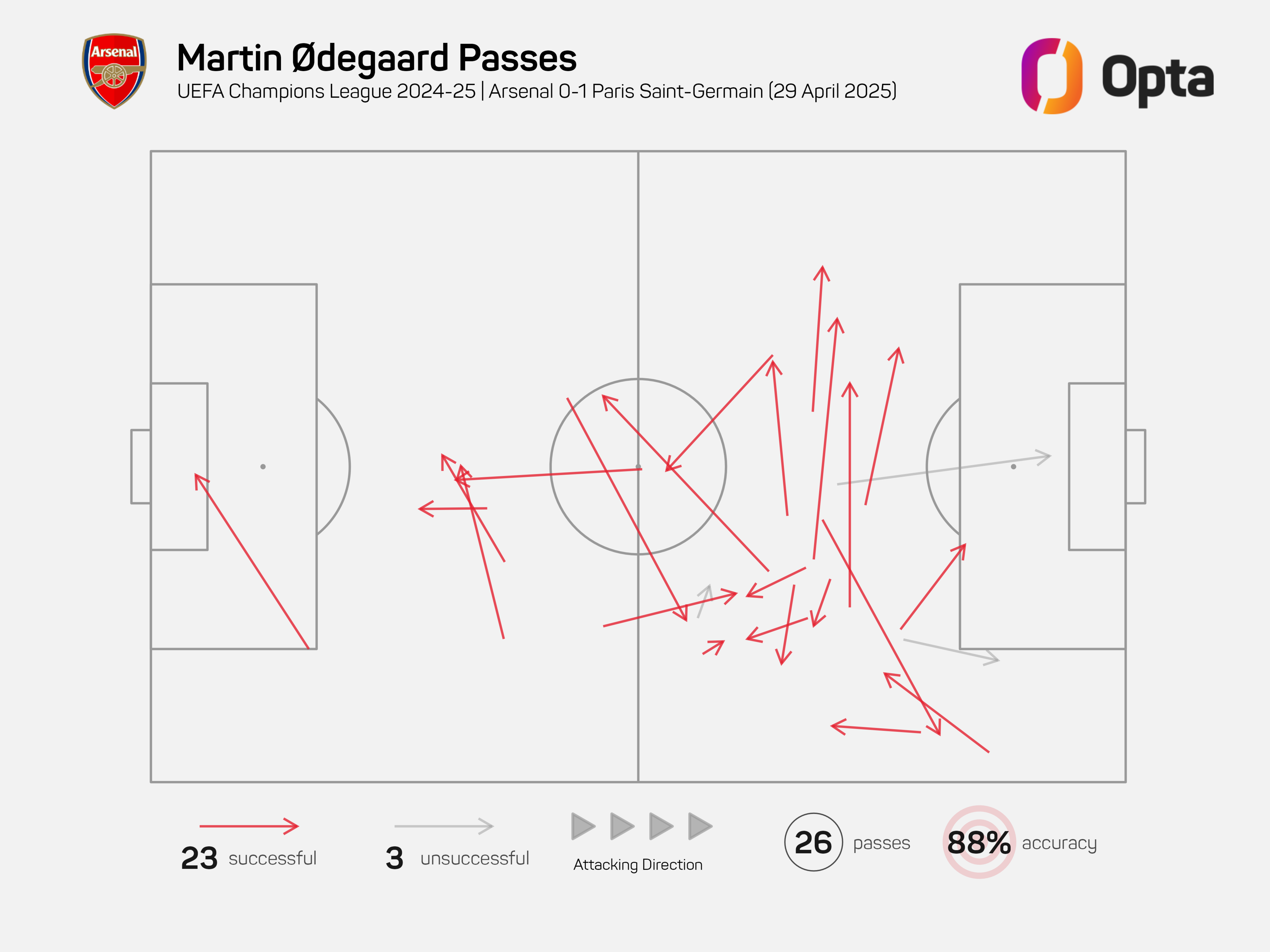 Image source, Opta
Image source, Opta
Odegaard's pass map from the PSG first leg - many of his passes were sideways
The solution is to drop Odegaard even deeper.
The Arsenal captain thrives when allowed to collect the ball on the right of midfield, getting a feel for possession before starting give-and-goes with team-mates.
Notice the difference between Odegaard's heat map from the PSG first leg and from Arsenal's 7-1 victory over PSV Eindhoven earlier in the competition, widely seen as the Norwegian's best performance of the season:
- Image caption,
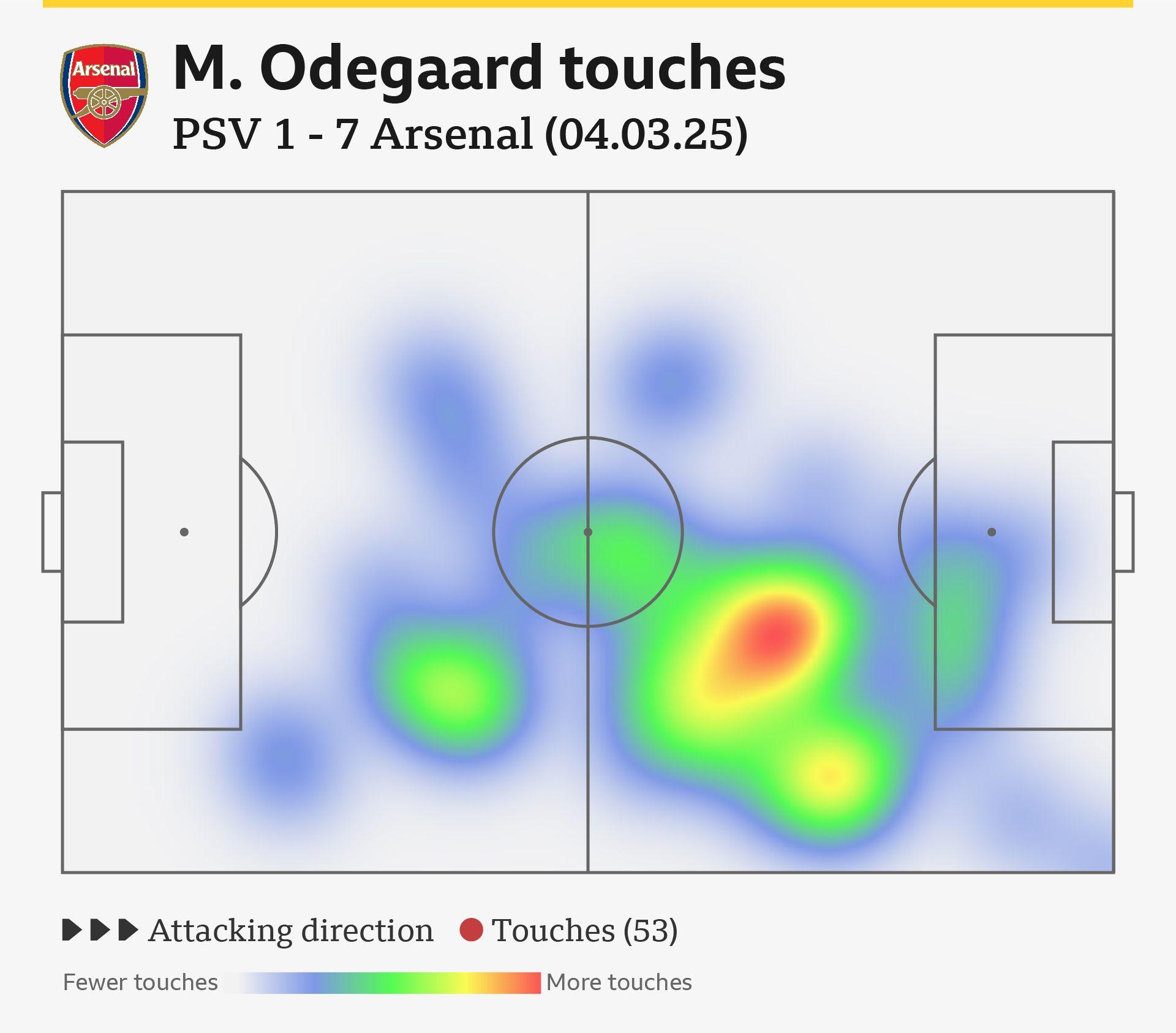
Image source, Opta
Image 1: Odegaard came short, into a deep right midfield position, to run the game against PSV.
Arteta needs to move Odegaard much deeper, where he can dictate the tempo with press-evading, one-touch passes, not only stopping Arsenal from being caught by the press but linking more fluidly with Saka, too.
3. Show bravery and aggression like Villa in their second-half blitz
That's all the learning Arteta can do from the first leg.
The rest of his week should have been spent pouring over Aston Villa's remarkable performance in their quarter-final second leg - when they beat PSG 3-2 but lost 4-5 on aggregate.
"I don't think my team has been so dominated by another team in that way," Luis Enrique said. "But this opponent has to take risks because they were going out of the competition. They attacked with great intensity."
That's what Arsenal need to do.
Villa's urgency, directness, and fearlessness left PSG in a muddle. Perhaps bearing the scars of collapses past, they gradually dropped deeper until they became overwhelmed by the ball-carrying of Morgan Rodgers and the pace of Marcus Rashford.
We've already covered how Arsenal can push PSG back and take control.
If they also bravely take risks in possession they can emulate Villa and scramble brains.
Their tactical route to doing so is Miles Lewis-Skelley.
He briefly became the game's key player last week when he began turning in possession and dribbling around Achraf Hakimi, opening up the pitch.
- Image caption,
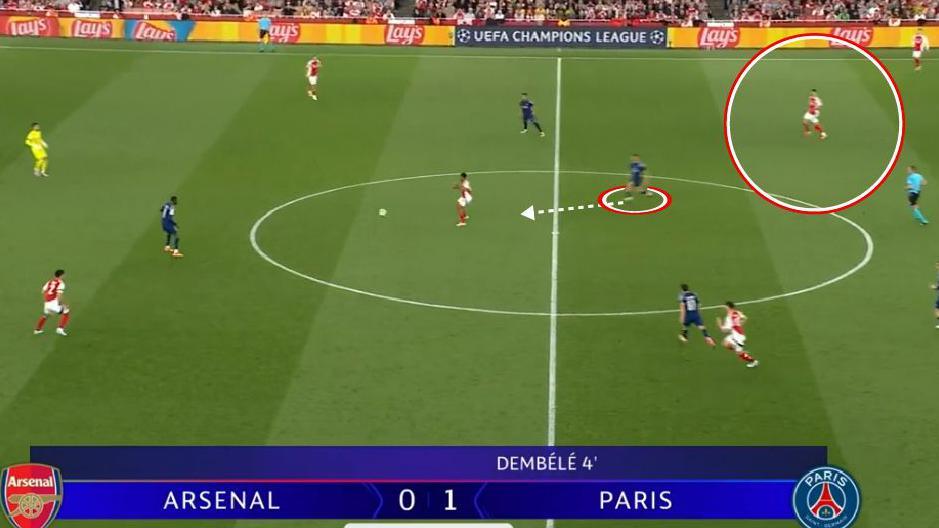
Image 1: Lewis-Skelley's inverted role draws Hakimi in.
Hakimi, caught between marking Gabriel Martinelli and covering Lewis-Skelley when he inverted, might again find himself with too much to do, especially if Rice - freed into a more advanced role now Partey is back - can help create Villa-style chaos by driving forward with the ball.
If all of the above goes to plan, Arsenal should win a few more free-kicks and corners than in the first leg. It remains their best route to scoring in Paris.
Arsenal have scored 14 set-piece goals in the Premier League this season and produced an expected goals (xG) of 15.91 from dead balls, more than anyone in Europe's 'Big Five' leagues.
Meanwhile PSG have conceded 10 set-piece goals in Ligue 1 (six from corners), amounting to 30.35% of their total goals against. That's by far the highest proportion in France and sixth-most in Europe's 'Big Five' leagues.
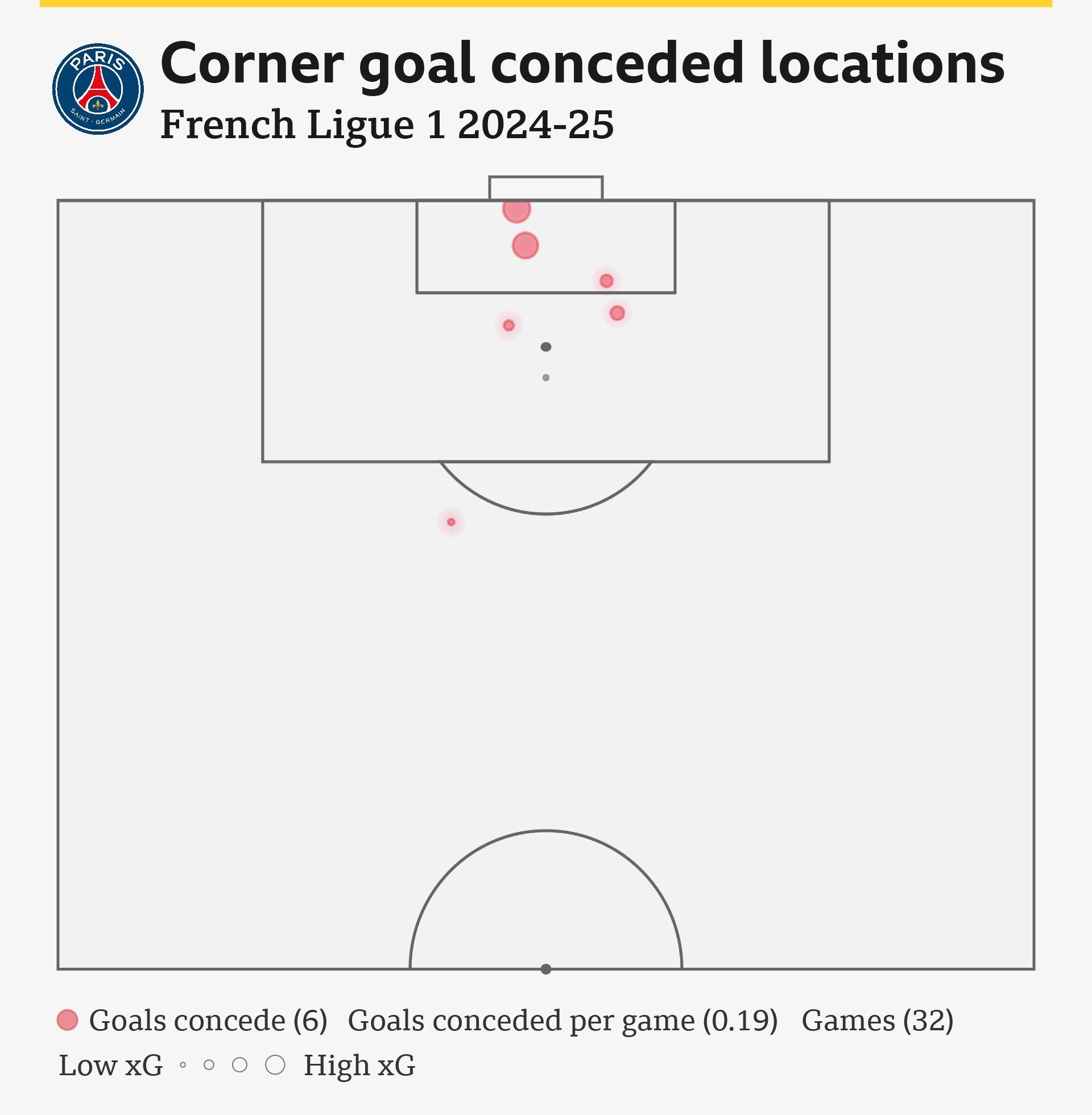 Image source, Opta
Image source, Opta
Corners to both the front and back post have been an issue for Enrique's side all season
A lot was made of this mismatch before the first leg, only for Arsenal to win just three corners and six free-kicks in the PSG half.
Those numbers will climb if Arteta gets his tactical plan right, in turn engineering the kind of set-piece chances that Arsenal have relished over the last few years.
That is the four-point tactical path to a famous victory in Paris.
Press in a 4-2-3-1 to shut down PSG's midfield rotations; get Odegaard deep to dominate the game; take risks on the ball, and maximise set-pieces.

 15 hours ago
9
15 hours ago
9

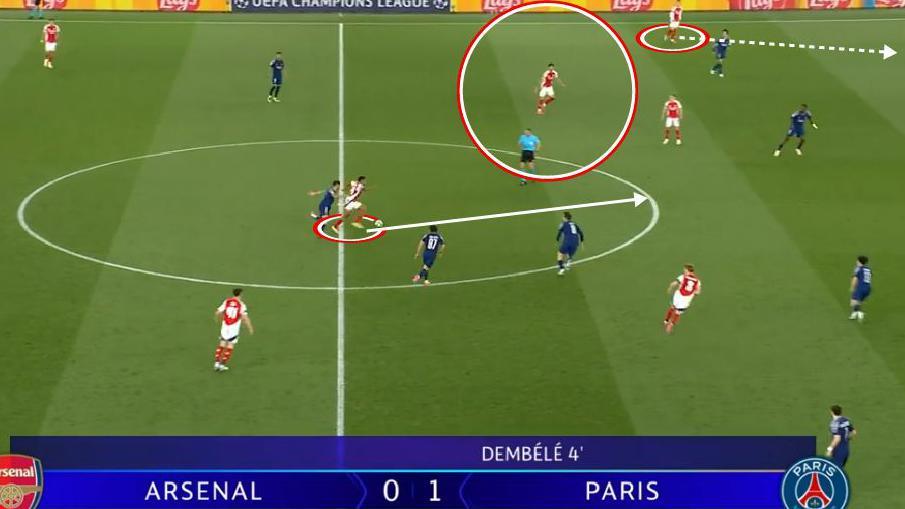
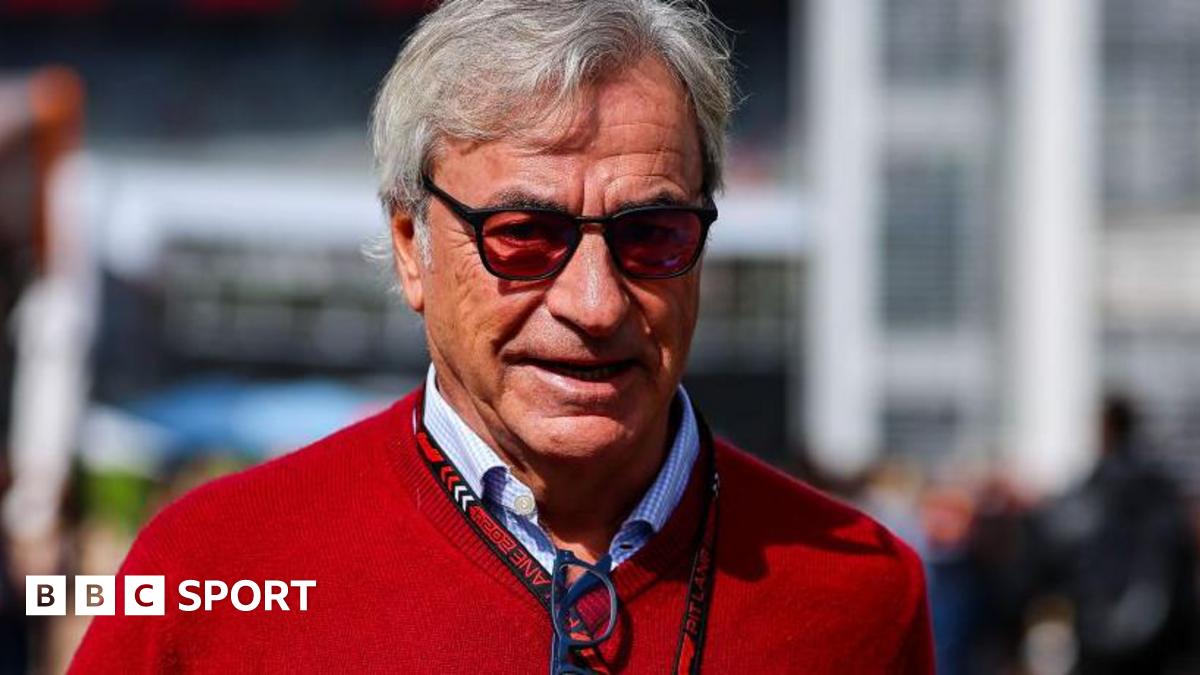


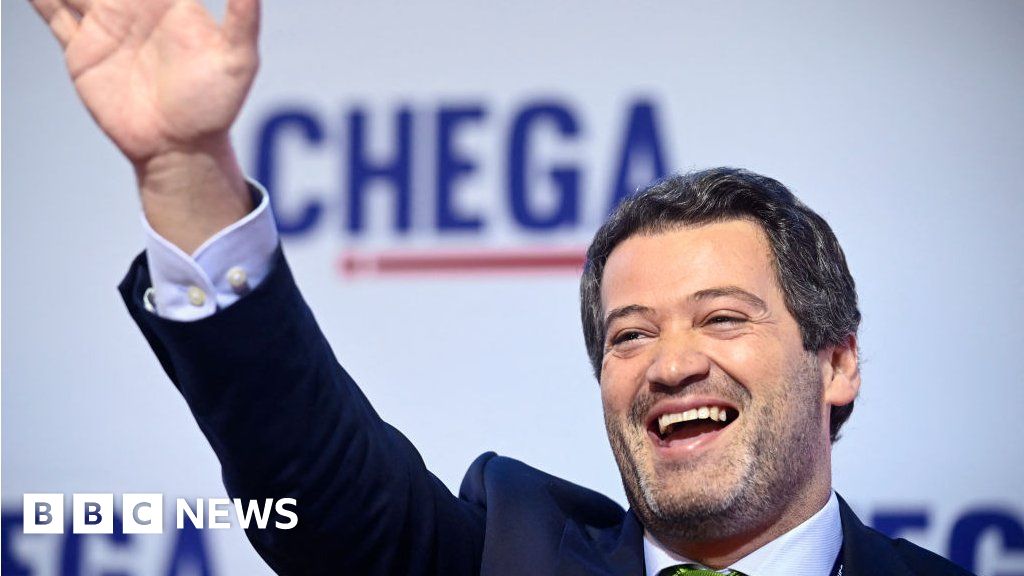

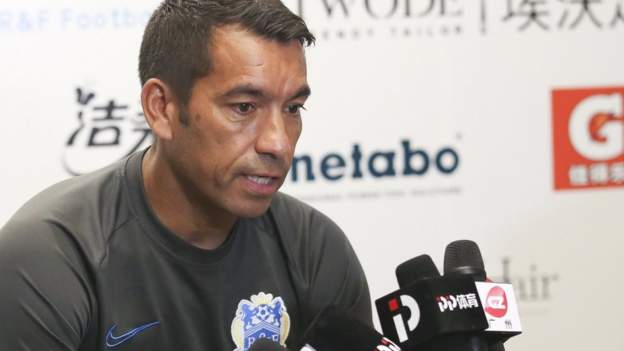

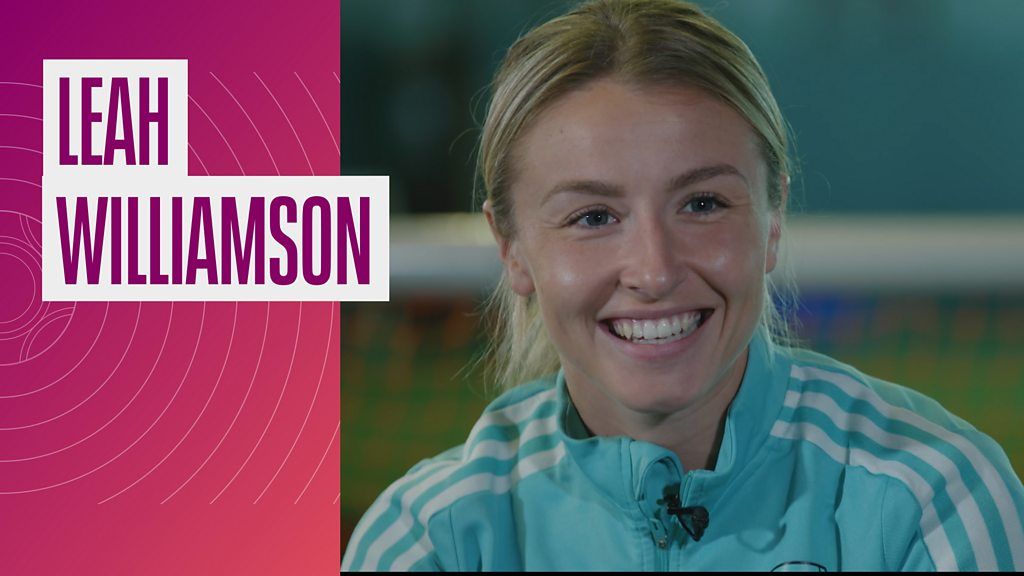
 English (US) ·
English (US) ·